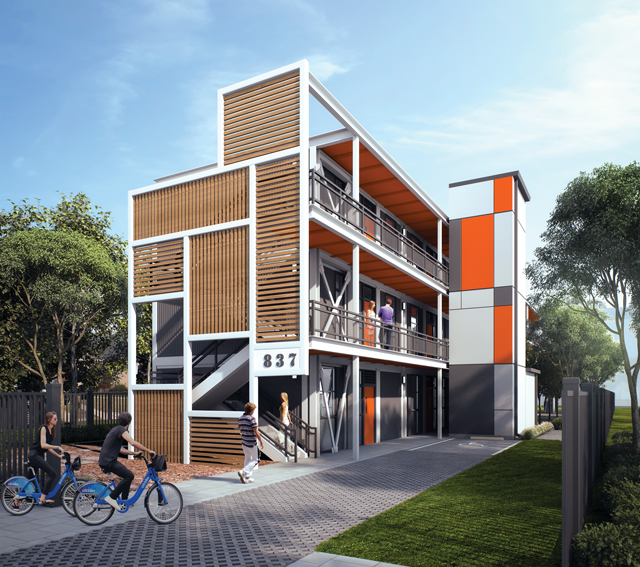Affordable housing is a critical issue in many cities, including Los Angeles. While the city has made significant strides in prioritizing affordable housing to reduce homelessness, it’s not enough to simply build more units.
For affordable housing to truly benefit all residents in all areas of the city, it’s essential to provide adjacent infrastructure that supports the needs of the community. Let’s examine how affordable housing is dependent on infrastructure and what we can collectively do to reach the goal of housing and access for all residents.
Infrastructure encompasses a wide range of elements that support the needs of residents, including transportation, public services, education, health care and more. Without adequate infrastructure, affordable housing can become isolated and disconnected from the wider community, making it difficult for residents to access essential services and amenities.
Underserved communities often have limited public transportation options. Although housing may be affordable, residents may struggle to access jobs, schools, health care and other essential services due to the lack of infrastructure. This can create further economic and social isolation issues, perpetuating cycles of poverty and reducing the overall impact of affordable housing initiatives.
Our priorities must focus on developing infrastructure that supports the needs of residents. This includes investing in public transportation, expanding access to health care and education and providing public services that meet the needs of low-income communities.
Sustainable communities
By doing so, we can create more vibrant, connected, and sustainable communities that support the success of all residents.
Los Angeles has implemented numerous programs aimed at providing affordable housing and improving access to public transportation for residents in the last decade. While there is still much work to be done, these efforts demonstrate the city’s commitment to creating more equitable and sustainable communities for all residents.
To make meaningful progress, it’s essential to prioritize infrastructure as a key component of the development process. By working closely with community members and stakeholders, we can identify the most pressing infrastructure needs, develop plans to address them and make long-term investments, which require funding.

Los Angeles is seeing benefits from its Transit Oriented Communities program through grants for affordable housing development near transit hubs. Transformative Climate Community grants have enabled the city to leverage transportation investments to support the development of affordable housing, creating more sustainable and connected communities.
A climate community grant program supported the construction of the Crenshaw/LAX Transit Project, a light-rail line that connects the Crenshaw neighborhood in South Los Angeles to the Los Angeles International Airport. The recently completed K-Line project includes several stops in under communities, has spurred the development of new affordable housing units in the area, and provides a new gateway to jobs, education and health care.
Transformative project
As part of the Walsh-Shea Corridor Constructors design-build team, HNTB served as lead designer and principal engineer for the K Line that connects one of the most culturally diverse communities in Los Angeles County to the greater Metro Rail network and includes seven new stations located in the communities of West Adams, Jefferson Park, Baldwin Hills, Leimert Park, Hyde Park, Inglewood and Westchester.
Metro and the team’s community-oriented design and construction approach was responsive and built with the input of the local community. From supporting small businesses, providing local employment opportunities, and incorporating community-based artwork for each station, the K Line will serve as a model for how future transit projects are built.
This transformative project will serve as a model for how future transit projects are built. By bringing agencies, infrastructure firms and communities together, we can address the transit needs of people living in important urban areas and provide them with accessibility and increased mobility and connect them to the larger region seamlessly for a better quality of life.
Ongoing investments by the city, combined with regional programs and climate community grants, are having a significant impact on affordable housing and transportation in Los Angeles.
By leveraging transportation funding to support the development of affordable housing, we are creating more connected and sustainable communities for the benefit of all residents. The goal is to ensure all Angelenos can have access to safe affordable housing, public transportation and the services and amenities they need to thrive.
Steven J. Chen serves as project director at HNTB Corp. He has more than 30 years of experience as a civil engineer working with the public sector. Previously, he was principal civil engineer and division manager for the Los Angeles Bureau of Engineering and worked in both stormwater and streets programs.

